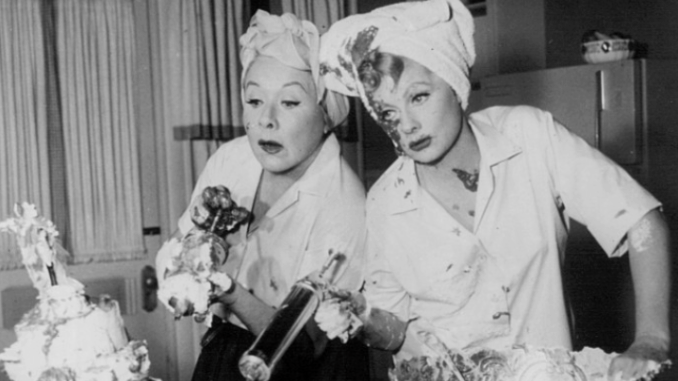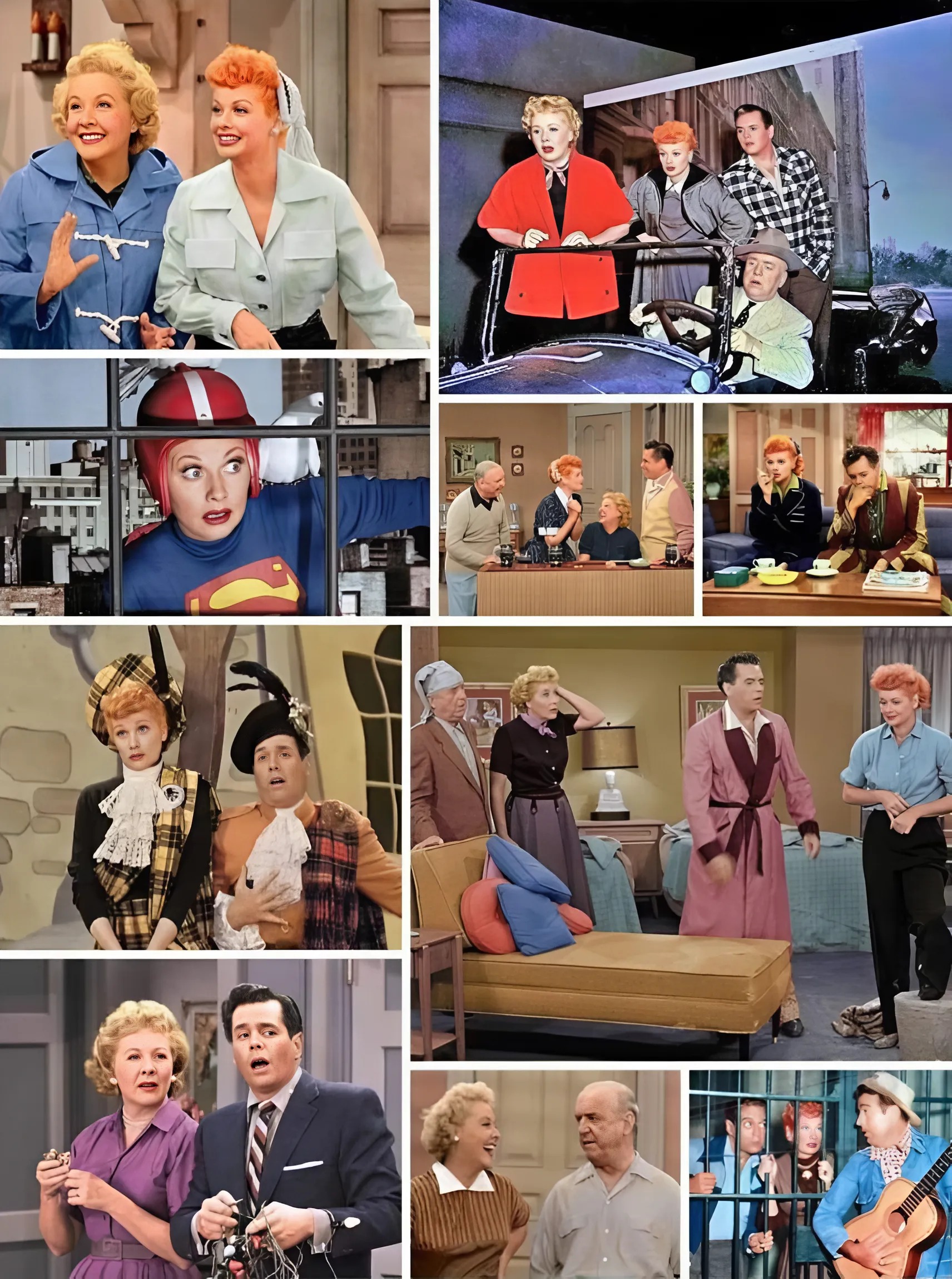
Premiering on October 15, 1951, I Love Lucy wasn’t just a hit comedy — it was a groundbreaking force that helped shape the future of American television. Starring Lucille Ball and Desi Arnaz, the show introduced technical innovations and narrative choices that set the standard for decades of sitcoms to come.
1. Pioneering the Three-Camera Sitcom Format
Before I Love Lucy, most television shows were broadcast live and recorded using kinescope, which delivered poor visual quality. Lucille Ball and Desi Arnaz insisted on filming the show on 35mm film using a three-camera setup in front of a live studio audience. This technique became the gold standard for sitcoms, offering both high-quality visuals and the ability to rerun episodes — something rare at the time.
2. Breaking Cultural Barriers with a Cuban-American Lead
Desi Arnaz, a Cuban-born actor and bandleader, played Ricky Ricardo — Lucy’s husband — at a time when ethnic representation on TV was extremely rare. His role broke new ground, helping to pave the way for greater diversity on screen.
3. Bringing Pregnancy to Primetime
When Lucille Ball became pregnant in real life, the show made history by writing it into the script. Lucy Ricardo’s on-screen pregnancy was a first for television. The episode “Lucy Goes to the Hospital” attracted 44 million viewers — more than watched President Eisenhower’s inauguration the following day.
4. Launching the Era of Reruns
Because the series was filmed on high-quality 35mm film, I Love Lucy was one of the first shows to be syndicated and rebroadcast, ushering in the lucrative era of reruns and residuals.
5. Lasting Influence on TV and Pop Culture
With 180 episodes and five Emmy Awards, I Love Lucy continues to air in syndication worldwide. Beyond its laughs, the show challenged gender norms and reflected the evolving role of women in 1950s America — making it not just entertainment, but cultural commentary.

I Love Lucy isn’t just a classic sitcom — it’s a lasting piece of television history whose innovations and influence are still felt today.
